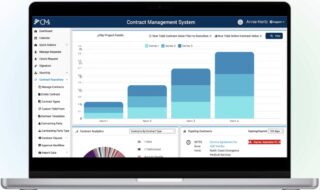In the competitive territory of mobile app development, the demand for innovative and user-friendly applications is at an all-time high. Users expect nothing less than seamless experiences. Consequently, developers and testers face immense pressure to deliver high-quality applications that meet and exceed user expectations.
That’s why Continuous Integration and Mobile Apps Test Automation have to step in to save developers and testers from being put under pressure to attain unattainable targets. Continuous Integration is a culture that fosters collaboration and communication among development teams. It involves frequenting code changes into a shared repository. Catching integration issues early in the development cycle.
Continuous Integration prevents the accumulation of bugs, making it easier for teams to manage complex codebases cohesively. Continuous Integration and Mobile Apps Test Automation creates a powerful synergy that empowers development teams to build, test, and release mobile applications with unprecedented efficiency and precision.
Contents
What is Continuous Integration for mobile applications?
Continuous Integration is a set of tools and practices that streamline the mobile application development lifecycle, Automating tedious tasks in the development cycle from building the application to deploying it into production. It aims to make developers’ lives significantly more manageable. Continuous Integration fundamentally transforms the development process and ensures higher efficiency and reliability.
The core principle of continuous Integration is frequently merging code changes into a shared repository, triggering automated builds and tests to detect integration issues early on, and fostering a collaborative development environment that helps maintain a stable codebase. When a developer commits changes to the version control system, the CI system springs into action, automatically compiling the code and running a suite of tests to ensure the application’s integrity.
What is a Continuous Integration Pipeline?
A Continuous Integration pipeline is a series of automated steps and processes that enable continuous code integration into a shared code repository. It is a fundamental part of Continuous Integration or deployment, designed to streamline and automate the development workflow.
The primary objective of the continuous integration pipeline is to ensure that code changes made by developers are systematically built, tested, and integrated with the existing codebase consistently and efficiently. It allows teams to identify and address integration issues, bugs, and regressions early in the development cycle, reducing the risk of problems reaching the production environment.
Let’s briefly discuss the key components of the Continuous Integration pipeline.
Source phase
The Source phase is the point of initiation of the continuous Integration or deployment pipeline. It involves developers committing code changes to a version control repository like Git. The repository is a central location where all code changes are stored and managed. The source phase triggers the automation process and sets the pipeline in motion.
Testing Phase
After the code is committed, the pipeline moves to the Testing phase. In this stage, automated tests are executed on the code to verify its correctness and functionality. Various tests are performed, including unit, Integration, and end-to-end tests. The goal is to identify any bugs or issues which may have occurred by the recent code changes and catch them early in development.
Building Phase
Once the code passes the testing phase, the code is automatically built to create a deployable artifact. The artifact can be a compiled executable application. The phase ensures that the code is converted into a format easily deployed.
Deployment Phase
The deployment phase is the final stage of the continuous Integration or deployment pipeline. This phase automatically deploys the built and tested artifact to the target environment. Depending on the development workflow, the deployment can be to a staging environment for further testing and validation or directly to the production environment for public release.
Benefits of Continuous Integration
Continuous Integration or deployment brings a multitude of benefits to the application development and deployment process, effectively redefining how applications are built, tested, and released.
Improved Code Quality
It ensures code changes are thoroughly tested before Integration. This leads to higher code quality as bugs and issues are detected early in the development cycle and can be fixed promptly. Overall stability and reliability are greatly improved.
Enhanced Performance
Continuous Integration and deployment encourage performance testing as a part of the automated testing process, which allows teams to identify and address performance bottlenecks, scalability issues, and resource constraints early in development. As a result, the application’s performance is optimized, leading to a smoother user experience.
Faster Releases
One of the primary goals of continuous Integration and deployment is to accelerate the application releases. With automated builds, testing, and deployments, developers can release new features, bug fixes, and updates more frequently. Faster releases allow organizations to stay competitive and swiftly respond to user needs and market demands.
Consistency and Reliability
The automated nature of continuous Integration ensures that each code change follows the same standardized build, test, and deployment process. This consistency reduces the risk of human errors and guarantees a reliable and repeatable deployment process.
Conclusion
Continuous Integration and deployment represent a transformative and modernistic approach to application development, elevating the entire story and deployment lifecycle. By automating code integration, testing, and deployment processes. It fosters a culture of efficiency, collaboration, and continuous improvement within development teams.
Moreover, it liberates developers from manual and repetitive tasks, allowing them to focus on innovation and creative problem-solving. The streamlined development workflow and automated deployment processes foster team collaboration, promoting seamless communication and a cohesive working environment.
Continuous Integration and deployment effects are felt throughout the application’s lifecycle. With continuous Integration, issues are resolved early on, reducing the risk of bugs and conflicts in the production environment. The rapid deployment and automated rollbacks also ensure a swift recovery from potential issues, minimizing disruptions and ensuring a positive user experience.



